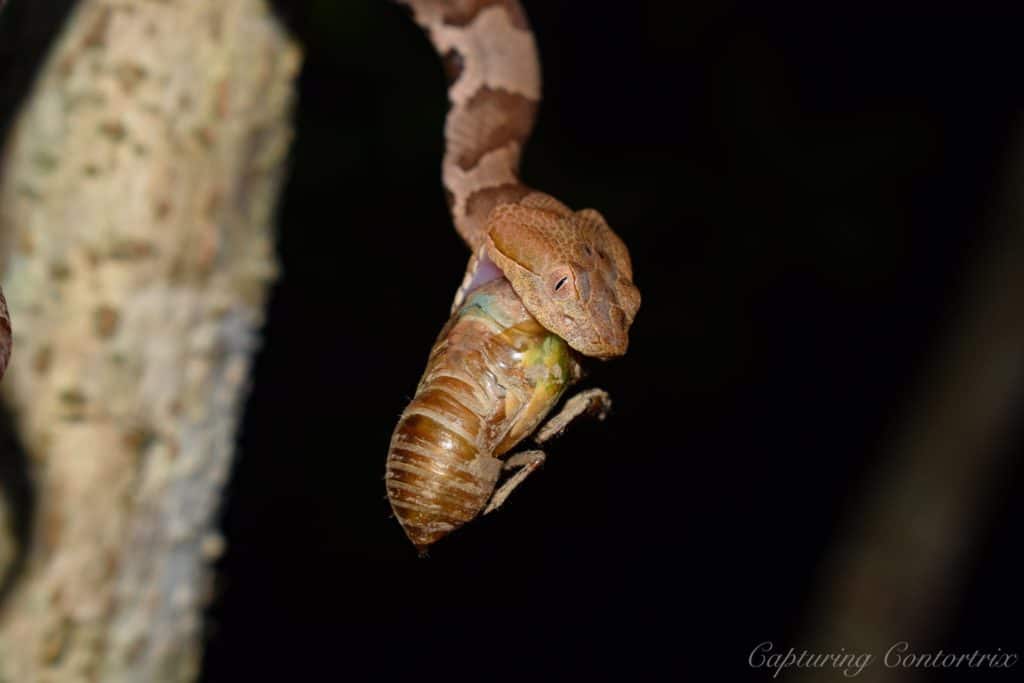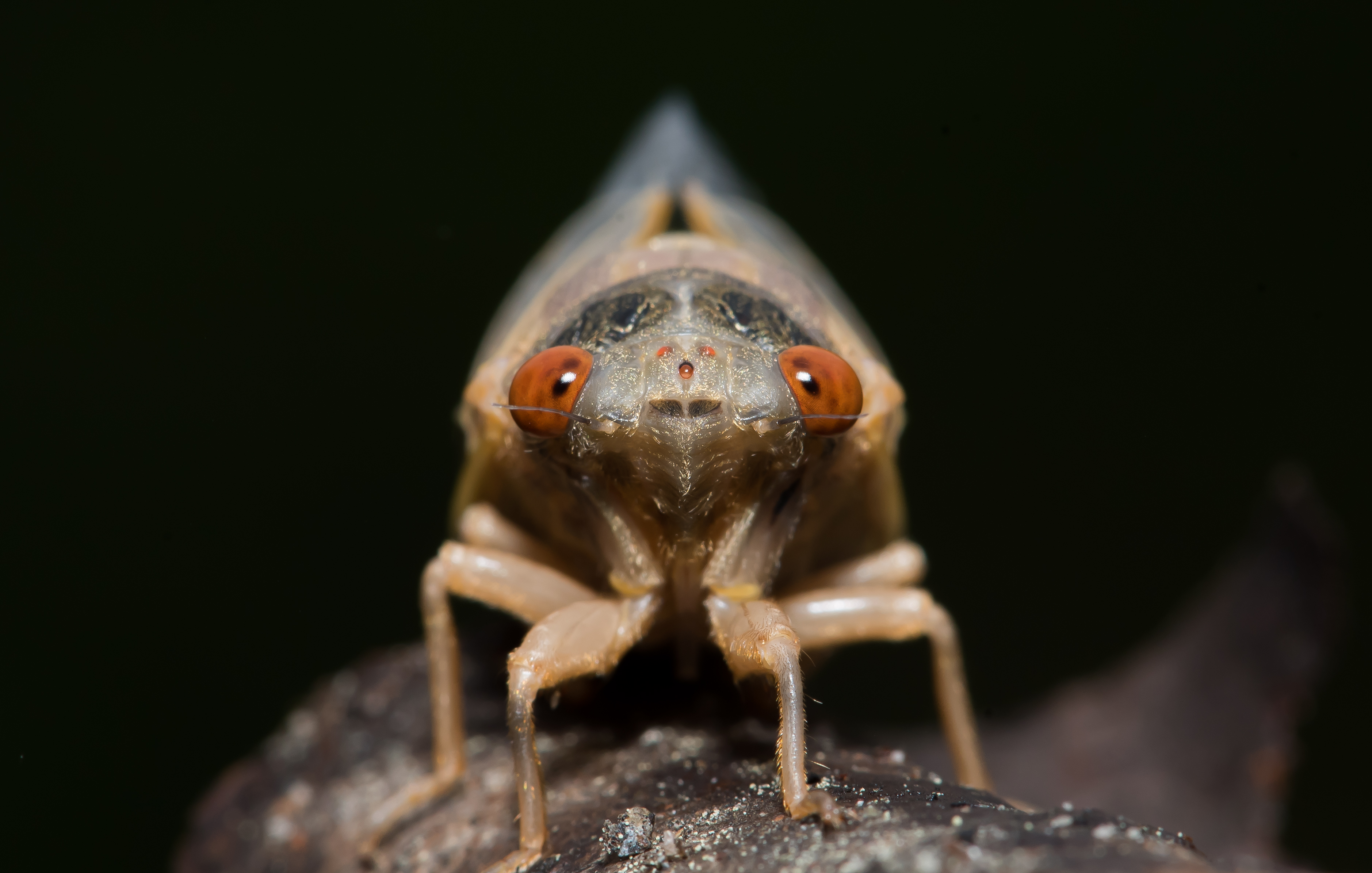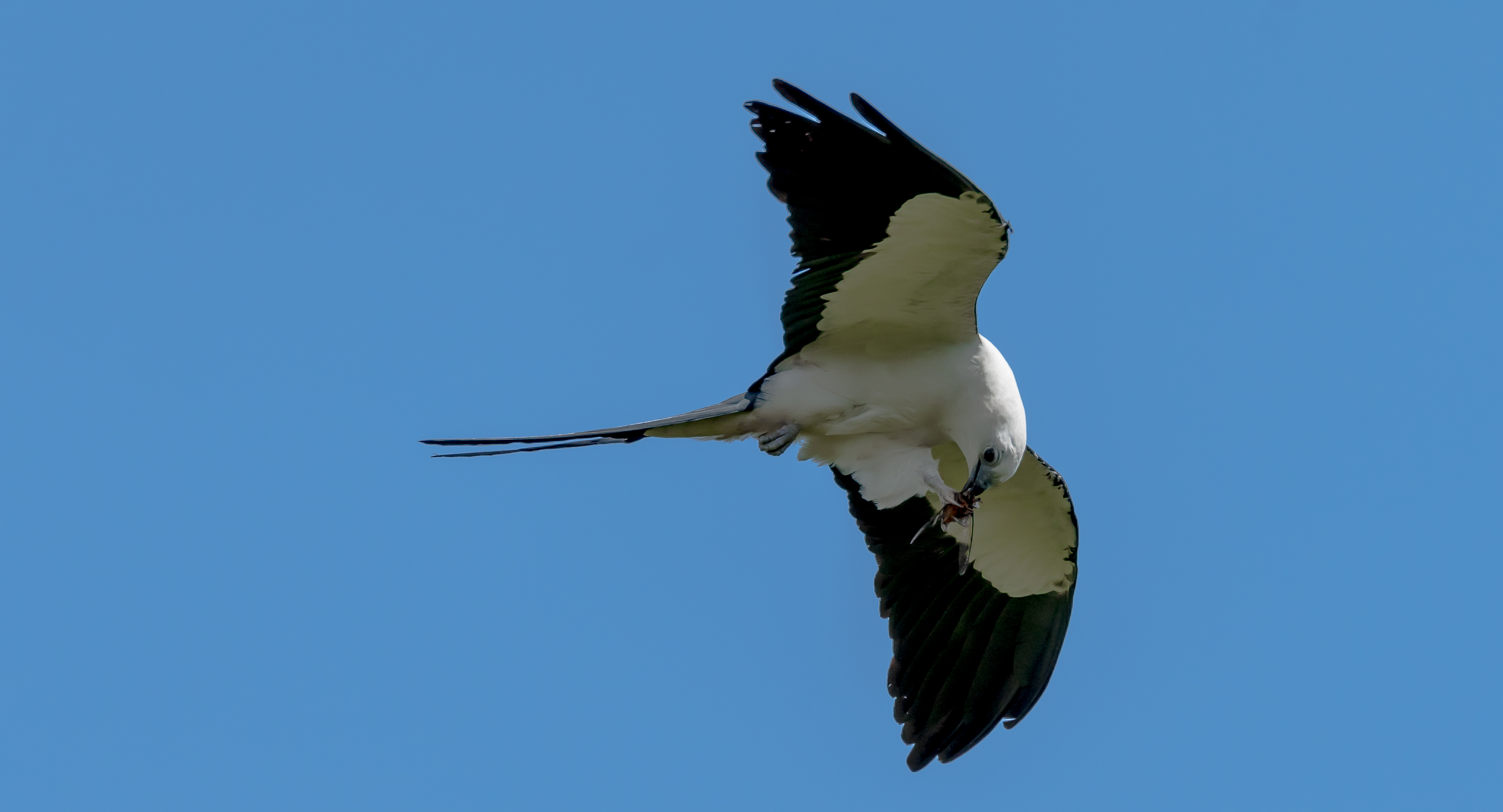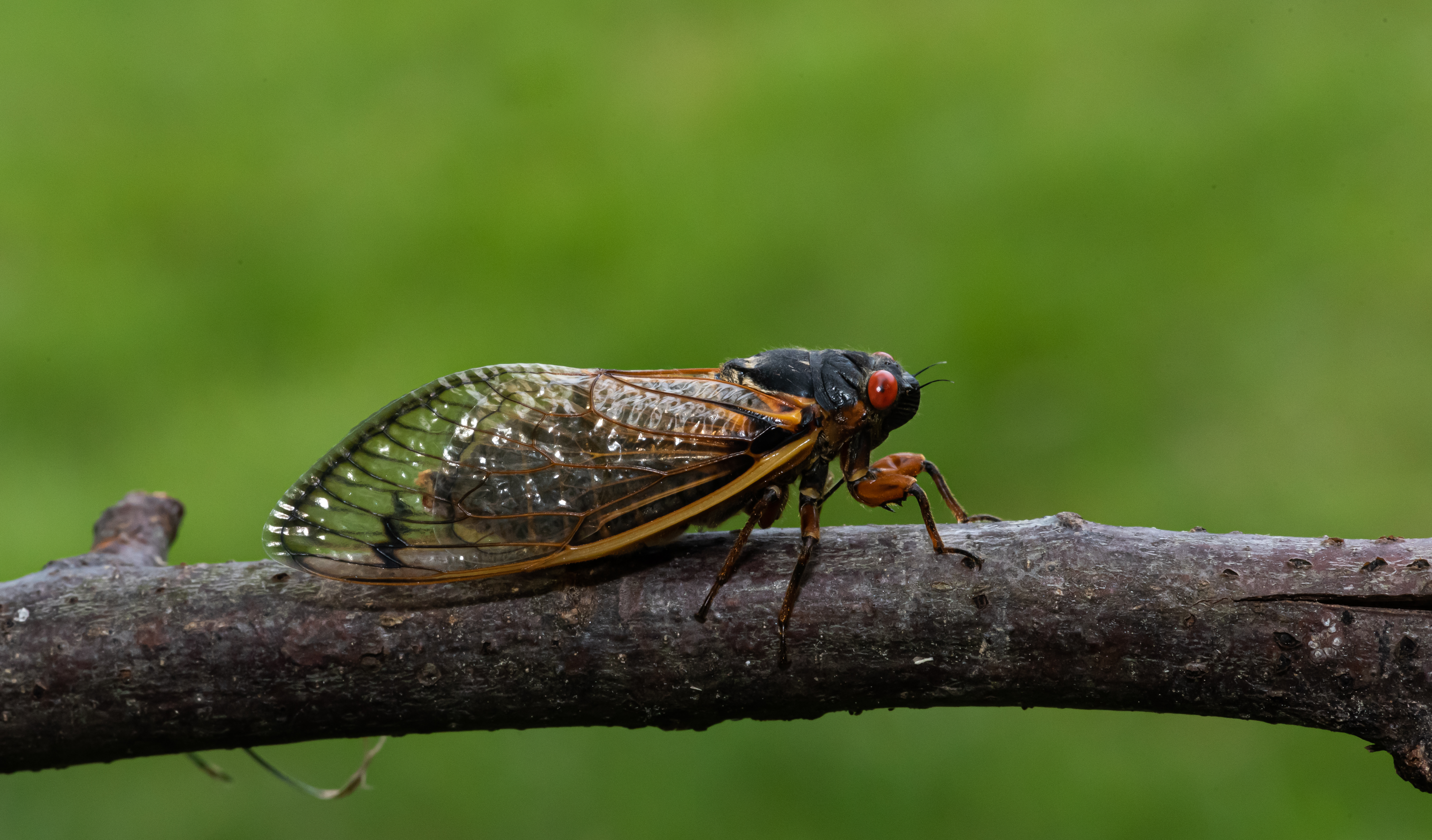Don’t Fear the Cicada
It sounds like something out of a horror movie. Billions of insects crawling out of the ground, shedding their shells, taking to the air and buzzing at all hours. But experts say we have nothing to fear from the emergence of the Brood X (as in the Roman numeral 10) cicadas this month.
Their emergence is a natural occurrence garnering a lot of attention regionally. Even Governor Larry Hogan went so far as to issue a proclamation last week declaring May and June 2021 as Maryland Magicicada Months, recognizing the return of the periodical cicada and generating public awareness about these fascinating insects. Brood X cicadas (Magicicada septendecula) are only found in the eastern United States and emerge once every 17 years. In Maryland, they will begin to emerge in May and will die off by the end of June.
“I encourage all Marylanders to take advantage of this opportunity to learn about these remarkable, harmless creatures,” said Governor Hogan. “For a few short weeks this spring, many across the state will have a front-row seat to witness a natural phenomenon that happens nowhere else on the planet.”
If all this buggy talk leaves you feeling a little creeped out, it may be a great time for a vacation. Maps of the emergence show that the cicadas will not make an appearance on the Eastern Shore; the bugs don’t like the sandy soil. Maryland beaches, such as Ocean City, are putting their PR machines to work, promoting their resorts as a bug-free zone.
No one at CBM Bay Weekly has been following the cicadas’ progress closer than Creature Feature columnist Dr. Wayne Bierbaum. He sends in this latest dispatch on a curious sight in his garden.
–Kathy Knotts
They’re on the way…
By Wayne Bierbaum
I was scraping the top level of soil off my garden plot when I noticed many circular vertical holes. Each were about the diameter of a dime. I stuck a straight twig down one and found it to be about 8 inches deep. As I relaxed my hold on the twig, it started to move, changing the angle at which it was resting. Instead of digging down through tree roots to see the animal that I had disturbed, I covered up the holes. I realized that very soon my yard is going to be covered in emerging Brood X cicadas.
The cicadas wait until the temperature of the ground and air are above 65 degrees before they emerge but do some preparatory digging ahead of time. They have been growing, maturing and waiting underground for 17 years.
Brood X is the largest and densest population of 15 groups of periodical cicadas. In our area, there can be as many as 1.5 million per acre. Numbers will vary from place to place. Based on the 2004 Brood X emergence in Maryland, cicadas will likely appear in the following counties: Allegany, Anne Arundel, Baltimore, Carroll, Cecil, Frederick, eastern Garrett, Harford, Howard, Montgomery, Prince George’s, and Washington. If you live in one of these areas and are surrounded by older trees, chances are their populations will be higher.
The males call to females for mating and it can get quite loud. At their last emergence in 2004, a section of Rock Creek Park registered the bugs at a whopping 96 decibels. That is loud enough to injure your hearing and would require shouting to be heard by someone six feet away. Their highest-recorded chorus is 105 decibels, comparable to a lawn mower, leaf blower or chainsaw. These sounds will usually last from late May to late June and will be loudest in the afternoon.

Scientists believe the emergence of so many insects at once is an evolutionary development to protect the species. Cicadas are eaten by almost every omnivore and carnivore. Everything from spiders, mice, turtles, birds, foxes, and bears will devour them. In 2004, some bird species, like the Mississippi kite, moved into our area to feed on the cicadas. The kites, as their name implies, like to soar in the sky and catch flying insects—and cicadas do a lot of flying. By having a huge number of insects emerging at one time, the predator becomes full, leaving plenty of cicadas to reproduce and continue the species. The process is called predator satiation.
After emerging and shedding their nymphal exoskeletons, they grow wings. The adult flying cicadas only live about two weeks and are in a hurry to complete their mission. If a cicada escapes being eaten, it will make a loud buzzing noise to attract the opposite sex. That noise comes from a special organ called the tymbal. The tymbal is thin and shield-like with a series of ridges or ribs. A muscle tightens and the ridges make noise as the tightening causes them to collapse, kind of like pushing in the side of a sealed, but half-full, plastic water bottle.
After a brief courtship and mating, the females use a special tube-like organ, the ovipositor, to deposit eggs into small branches or twigs of trees. Each female is capable of laying about 600 eggs at about 20 per branch. In late July to early August, their eggs hatch and the young feed on the tree’s sap. The feeding eventually causes browning and frequently death to the branch. The tiny white nymphs will fall from trees and immediately begin to burrow underground where they will live until 2038, feeding on the sap in the tree’s roots.
So, when is this going to happen? When will they come out? When the temperature is right. For local data on the emergence, you can track observations in a smartphone app. Some cicadas were discovered in the soil around the end of April but the main attraction should occur later this month. Tree injury from the heat and drought of 2019 may have affected their numbers and there may be fewer than expected.
The cicadas are pretty crazy fliers and will likely run into windows, cars, buildings, and people. If one lands on you, simply brush it off. I would wear glasses or goggles when riding a bike. Once the Brood X cicadas die in late June, there will be billions of carcasses decomposing on the ground and they may give off an unpleasant odor. Do not use pesticides or insecticides to try to kill them—doing so will not be helpful in controlling populations and only poses a threat of harming other helpful, beneficial insects. The best way to dispose of them is by adding their carcasses to a compost pile.
Cicadas do not chew, bite, or sting, so they are not a threat to humans, pets, animals, or most plants. If your pet or animal consumes a few cicadas, they should be fine, though over-indulging may upset their stomach.
“Cicadas themselves are nontoxic creatures, so if your pet eats one or two at a time there shouldn’t be a problem,” says Dr. Tommy Kozek, emergency veterinarian and founder of Anne Arundel Veterinary Emergency Clinic. “As with anything, all is good in moderation,” he said. “If pets overconsume cicadas or their exoskeletons, it can cause gastrointestinal symptoms such as vomiting or diarrhea. We don’t recommend that pet owners allow their pets to overconsume substances of any kind.”
Even humans have been known to enjoy some cicada delicacies. There are actual cookbooks available on how to serve up the winged bites. Chefs say freezing and then boiling is the best first step to destroy any microbes.
I don’t think I’ll do this but collecting them when they first emerge and cooking them as a stir fry is apparently the thing to do. Invite the neighbors.
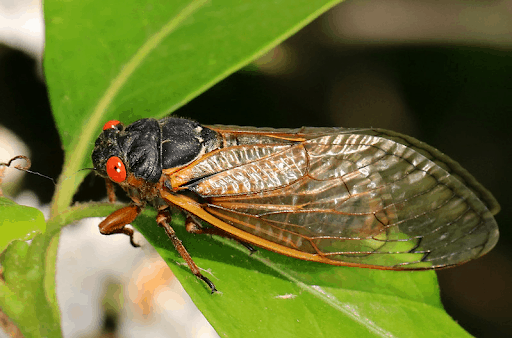
Copperheads cause for concern?
By Kathy Knotts
A recent article making the rounds on social media suggested that the Brood X emergence will also bring out an unwelcome visitor: copperhead snakes. But rest assured, Marylanders shouldn’t worry any extra about the presence of a venomous snake.
“Any special relationship between the Brood X cicadas and copperhead snakes is myth-making, presumably based upon the irresistible human urge to mix the deliciously icky with the deliciously scary,” says Jonathan McKnight, associate director of Maryland DNR’s Natural Heritage Program.
“Like many animals, copperheads who have the good fortune to live during a Brood X emergence will enjoy an unlimited supply of yummy soft treats that literally pop up out of the ground around them. It will be a great time to be a copperhead! But there will not be more copperheads this year because they have not been keeping track of the timing of the cicadas,” says McKnight.
Part of the magic of the periodic cicadas, he says, is that by emerging very rarely, and usually on a prime number cycle, predators are unable to time their own reproduction to their eccentric schedule. “So, while the supply of free lunches will be unlimited—indeed the entire cicada strategy involves filling up the predators and then still relentlessly spilling forth—they are a limited-time offer. A few weeks of all-you-can-eat buffet and then it’s back to hunting mice.”
McKnight still recommends being aware of situations in which a copperhead could be present, such as moving a woodpile or flipping over a canoe that has been untouched for a while. “Be alert and give them a chance to move off if you encounter them. They do not want to bite you. There are too many other great things to eat—especially this year.”
